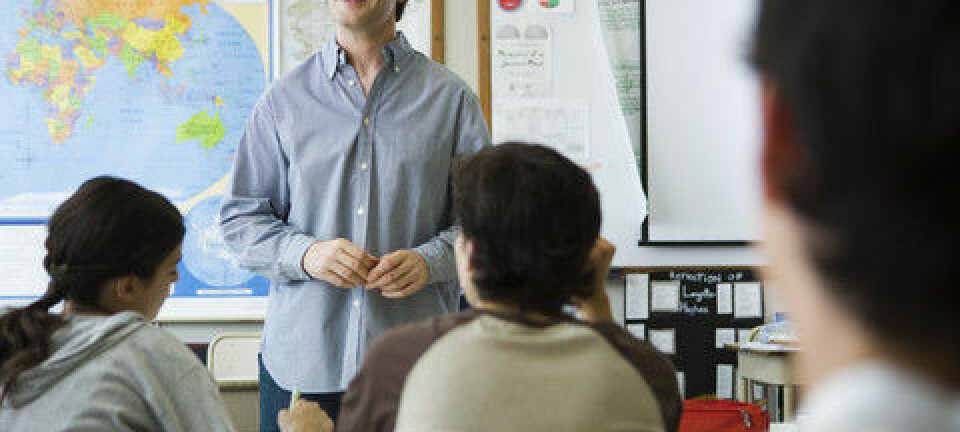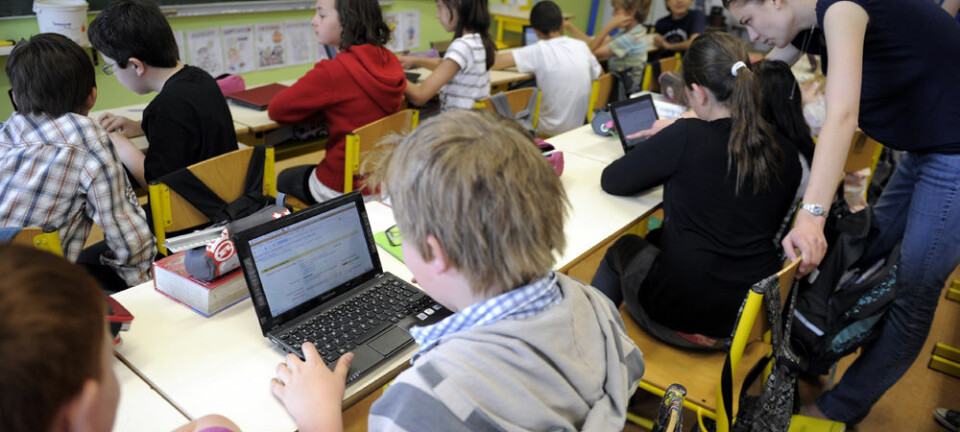
Computers: a turn-off for teachers
Pupils lose out on using computers in school because of banal obstacles - such as flat batteries and a lack of electrical sockets.
Denne artikkelen er over ti år gammel og kan inneholde utdatert informasjon.
Despite information and communications technology (ICT) being embedded in the Norwegian curriculum and defined as a priority skill alongside writing and maths, a 2012 survey shows that it's often pushed to the side.
Bård Ketil Engen, an associate professor in digital literacy, followed classes at two Oslo schools throughout a year to get an overview of how ICT is incorporated into teaching.
Many ICT limitations
He found that ICT lessons were limited for a number of reasons:
-
Practical obstacles: A lack of available electrical sockets, frequently flat batteries, recurring technical problems, and the logistical effort of transporting stacks of laptops around.
-
Lack of organising: ICT in the classroom has not been systematically implemented. It is often dependent on enthusiasts willing to use time both during and after work hours to set it up.
- Lack of management: School management needs to give a clearer message that ITC should be taught. Teachers' ITC skills will not develop without being pushed from above.
No natural home for ICT

“One main problem is that ICT is not confined to one subject, but encompasses the whole of the curriculum,” says Engen, who works at the Oslo and Akershus University College of Applied Sciences.
“While maths is a defined subject and writing belongs in language class, digital skills are supposed to be integrated into all subjects – and are therefore often pushed to the side. ICT is in many ways a subject without a natural home.”
One tendency he describes as "unfortunate" is to restrict PC access until after pupils have finished other tasks – in essence making it the preserve of the brightest pupils who finish first, in classes where only three or four PCs are available.
This can also turn PC time into unfocused 'chill-out' time, becoming a treat for pupils having done their other tasks.
Tablets more seamless than laptops
A better alternative might be to use tablet computers. Engen noticed how tablets integrated more seamlessly into a teaching situation than laptops.
“A tablet is smaller, has a longer battery life and is more practical," he explains. "It becomes part of class along with other teaching material – the pupils can switch between textbook, notepad and tablet.”
Although digital literacy has been established as a basic skillset, there are still teachers proposing that PCs should be removed from the classroom because they feel PC use distracts the pupils.
But the media debate about the pros or cons of PCs in school is irrelevant and pointless, argues Engen.
Not about technology, but managing class
“Since digital literacy is set out as a basic skill, you cannot suggest removing computers from the classroom. PCs in teaching are here to stay. These debates always emerge when new technology arrives,” he adds, pointing to the quaint debate for or against colour TV – which at the time even reached the Norwegian Parliament.
If pupils are distracted, it's not about the PCs – but about managing the class, Engen concludes.
“Pupils using the PC for other things than intended is not a new problem. This is not about technology, but about attitude. The solution is to ensure good management of the class – whether the distraction happens to be digital or otherwise.”
------------------------------
Read a Norwegian version of this article in Norwegian

































